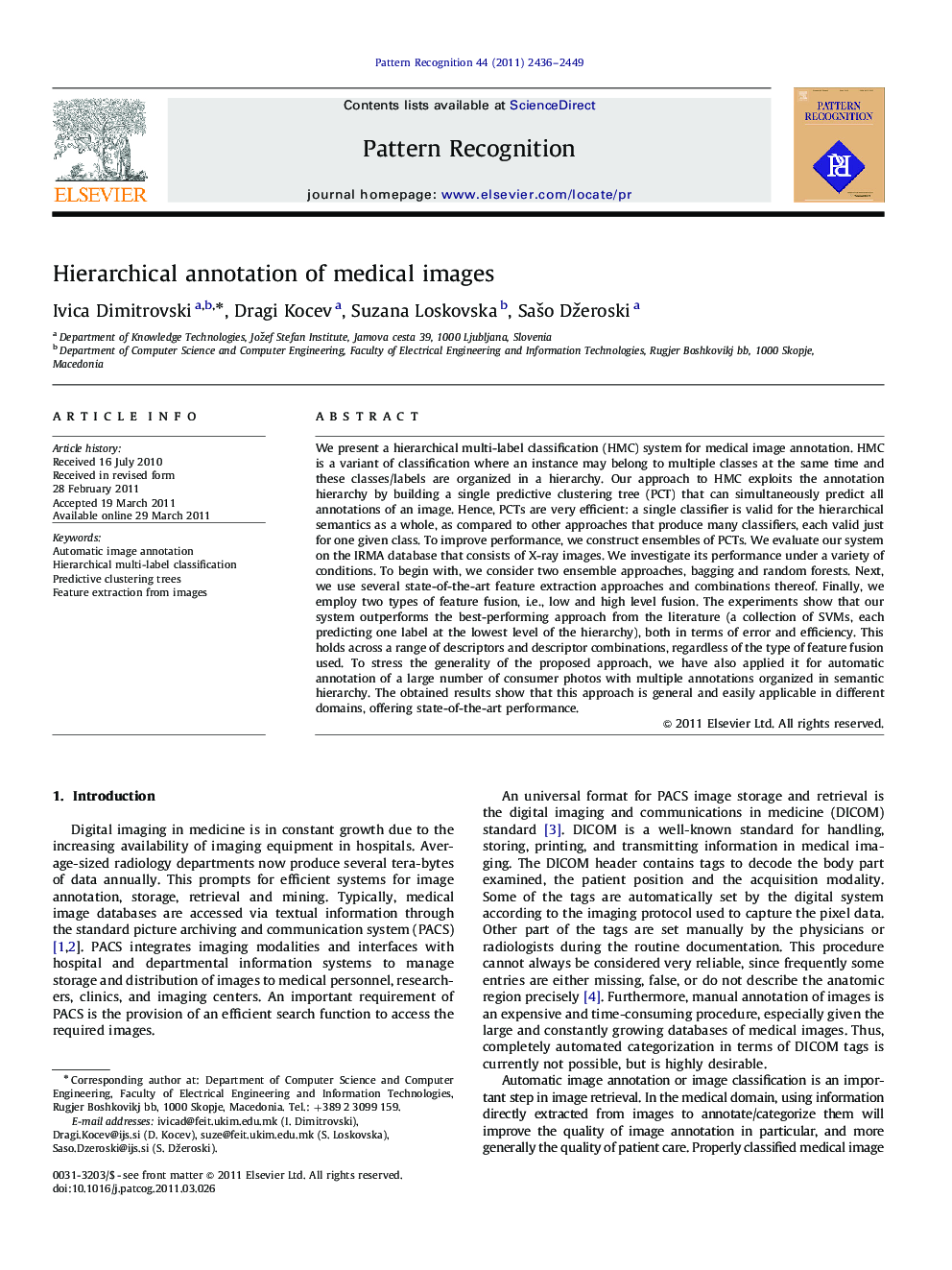| Article ID | Journal | Published Year | Pages | File Type |
|---|---|---|---|---|
| 533501 | Pattern Recognition | 2011 | 14 Pages |
We present a hierarchical multi-label classification (HMC) system for medical image annotation. HMC is a variant of classification where an instance may belong to multiple classes at the same time and these classes/labels are organized in a hierarchy. Our approach to HMC exploits the annotation hierarchy by building a single predictive clustering tree (PCT) that can simultaneously predict all annotations of an image. Hence, PCTs are very efficient: a single classifier is valid for the hierarchical semantics as a whole, as compared to other approaches that produce many classifiers, each valid just for one given class. To improve performance, we construct ensembles of PCTs. We evaluate our system on the IRMA database that consists of X-ray images. We investigate its performance under a variety of conditions. To begin with, we consider two ensemble approaches, bagging and random forests. Next, we use several state-of-the-art feature extraction approaches and combinations thereof. Finally, we employ two types of feature fusion, i.e., low and high level fusion. The experiments show that our system outperforms the best-performing approach from the literature (a collection of SVMs, each predicting one label at the lowest level of the hierarchy), both in terms of error and efficiency. This holds across a range of descriptors and descriptor combinations, regardless of the type of feature fusion used. To stress the generality of the proposed approach, we have also applied it for automatic annotation of a large number of consumer photos with multiple annotations organized in semantic hierarchy. The obtained results show that this approach is general and easily applicable in different domains, offering state-of-the-art performance.
